Certain garden plants earn their designation as go-to plants, and usually for good reasons. Consider Blue Star juniper (
Juniperus squamata ‘Blue Star’). It has a compact size and offers evergreen foliage with seasonal interest, versatility, hardiness and adaptability. What’s not to love? Let’s take a look.
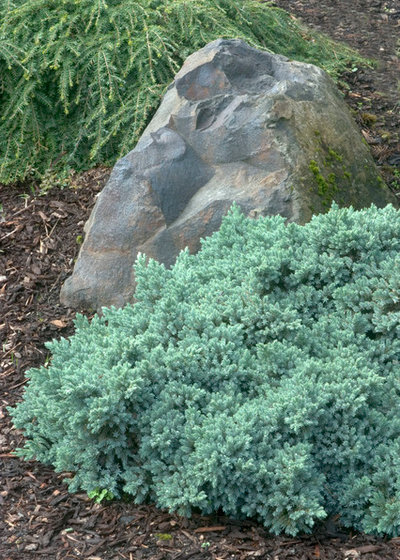
Monrovia
Botanical name: Juniperus squamata ‘Blue Star’
Common name: Blue star juniper
Origin: The species is native to the Himalayan mountains and China.
Where it will grow: Hardy to -30 degrees Fahrenheit (USDA zones 4 to 8; find your zone)
Light requirement: Full sun to partial shade
Water requirement: Average (1 inch of water per week); relatively drought tolerant once established
Mature size: Slow growing to 2 feet tall and 4 feet wide
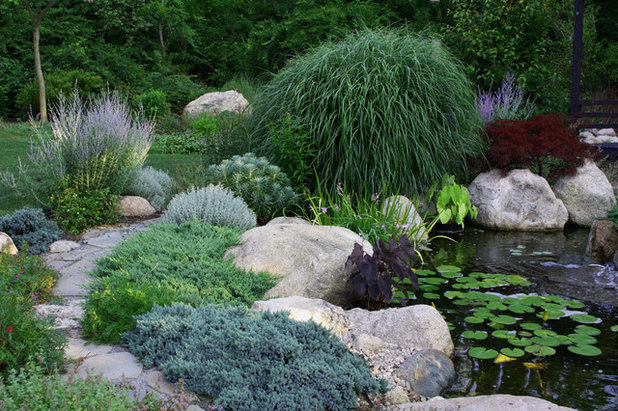
Amy Martin Landscape Design
Benefits and tolerances: Deer and rabbit resistant; tolerant of air pollution; drought tolerant once established
Seasonal interest: Year-round blue foliage that develops undertones of red and orange during winter
When to plant: Spring or fall is preferred.
Distinguishing traits. Its compact size and mounding shape set it apart from most other conifers. Additionally, it has softer foliage than many of the old-fashioned junipers that come to mind.
Shown: Blue Star juniper in the foreground
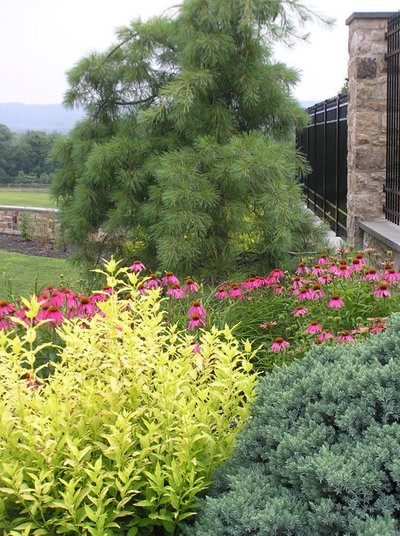
The Outdoor Room, LLC
How to use it. Blue star juniper earns its place in the design color trinity of blue, chartreuse and red. It offers itself up as a calming, peaceful mediator when placed between plants in bright hues such as orange and pink.
Its mounding shape mimics that of boulders; because of this it is a useful plant for creating juxtaposition in the garden.
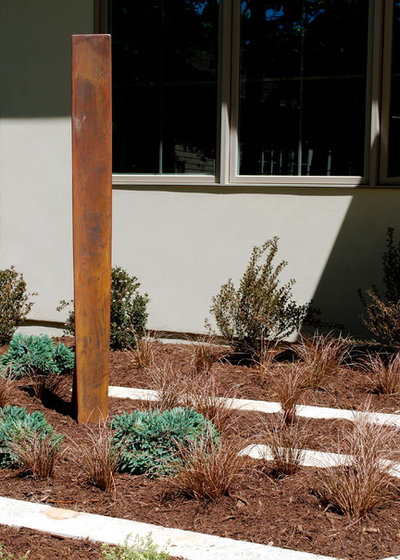
Jay Sifford Garden Design
Blue and orange are complementary hues on the color wheel, so Blue Star juniper plays well in contemporary gardens where rusted steel is used. In the photo shown here, it adds needed but restrained color to an almost monochromatic scheme.
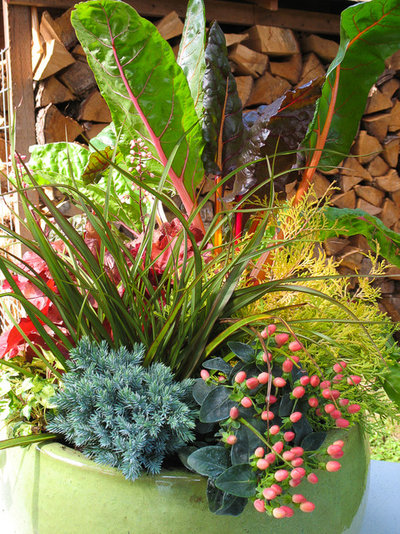
Le jardinet
Because of its compact size, Blue Star juniper, shown here in the foreground, is a welcome addition to container gardens, adding essential color and texture.
Planting notes. It performs well in sun to partial shade in average, well-drained soil.





